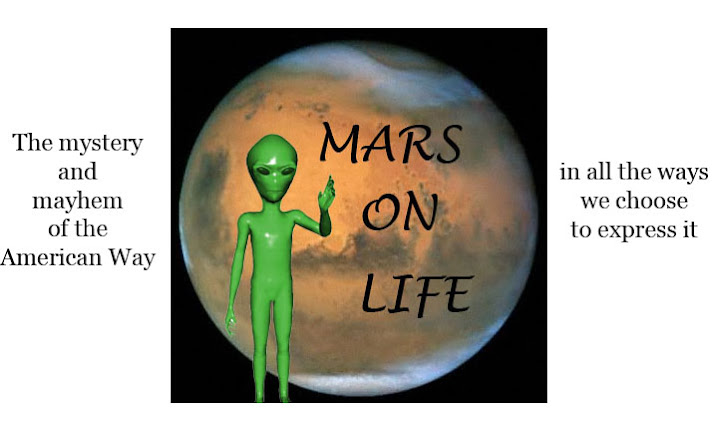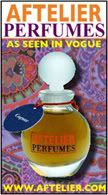
In hindsight, 1977 was a technologically momentous year. The Apple II, a product that moved computers beyond electronics hobbyism to personal use, entered the mass market along with the Commodore PET and Tandy Corporation's TRS-80. The first shot of the personal-computer revolution, however, was not initially so resounding as those made by disco and by Farrah Fawcett.
Two Vogue covers, from April and November, are as definitional of 1977's short-lived cultural phenomena as the Woodstock poster (3 Days of Peace & Music, emphasis on the philosophical) had been to the optimistic Aquarians who didn't see the end of the American guarantee on the horizon.
In April of 1977, Vogue ran an Avedon cover of the by-then ubiquitous Fawcett on an issue devoted to fitness. Fawcett, an actress who had begun her career in commercials, was then the poster girl for the star-making apparatus that wheeled around the record sales of her image in a red one-piece bathing suit. Charlie's Angels, the "jiggle TV" juggernaut in which Fawcett starred, was at the end of its highly successful first (and for Fawcett, last) season.
Fawcett was not the first Hollywood celebrity to appear on the fashion bible's cover. Earlier models included the patrician, well-dressed Candice Bergen and Goldie Hawn, whose anti-chic image was featured on an incoherent 1971 issue that promised Paris Now.
By the time of Fawcett's appearance, Vogue had wised up. While it was necessary to keep abreast of current events, it was then a stretch to associate Hollywood celebrity with haute couture. This was especially true of television personalities, where Cher reigned supreme over the glitter and spangle of Bob Mackie and yet was demurely styled for her own 1972 cover.
The fitness cover w as anticipatory of the aerobics craze of the late 1970s and early 1980s. Fawcett was associated with a mild sport and was a prime example--genetics aside--of the healthy American good looks that might be derived from exercise regimens. This was one of Vogue's less insular issues, and one in which the magazine's second mission, not to parse the avant-garde, was on full display.
as anticipatory of the aerobics craze of the late 1970s and early 1980s. Fawcett was associated with a mild sport and was a prime example--genetics aside--of the healthy American good looks that might be derived from exercise regimens. This was one of Vogue's less insular issues, and one in which the magazine's second mission, not to parse the avant-garde, was on full display.
Seven months later, a blonde Rene Russo looked slyly out from an issue that, in one word, covered a major social happening: disco. Vogue labeled it "nightlife," but it referred to the burgeoning Manhattan dance-club scene. This scene had shifted from the traditional "discothèque" of Regine's and the Peppermint Lounge to Studio 54, which had opened in April of that year.
Now liberated from its strict etymological origin as a place to dance to records, disco was both venue and music. The term was coined at the end of the Peppermint Lounge era. Disco the music has faintly disputed origins, but music and cultural historians agree that the emergence of disco as a chart-topping music form occurred with Hues Corporation's 1974 hit single "Rock the Boat."
With this issue, Vogue foreshadowed the release of Saturday Night Fever, which debuted the following month. Nightlife, or more specifically disco nightlife, was more in the Vogue wheelhouse than fitness had been. Here, Vogue could decorate their pages with the luxe furs that brought in heavy advertising dollars while at the same time showcasing their own hipness and willingness to pander to the relatively new convergence of Hollywood, the Manhattan pop-art and fashion scenes, and the Social Register. While the fitness issue was democratized and likely to appeal across a wide demographic, the nightlife issue was happily elitist and most assuredly not aimed at the Iowan farmer's wife who might put on a scratchy leotard and enroll in a Jazzercise class at the local Y. Instead, the nightlife issue was all about exclusive glamour (Blackglama! Harry Winston!), in its purest alien form out of the reach of the masses who could only look at the reckless plumage with presumably vicarious envy. Underneath the clothes, it was the craze that Vogue was addressing; in 1977 we were a polyester nation, Hustling madly even as disco spread to its predictable death in the suburbs. Vogue merely examined it from an exalted height.
Disco was always a most fragile phenomenon, as was the social scene that surrounded it. Even before AIDS struck at the heart of the disco community, that Manhattan populace danced on a crust as so many collapsible characters from They Shoot Horses, Don't They?, albeit ones fueled by cocaine.
Nineteen seventy-seven was also a year in which Vogue continued the use of the exclamation point to emphasize a fairly new practice of assigning a one- or two-word précis to each issue. The word or phrase, which sometimes slightly overlapped the magazine's name, was either an imperative (Smile!) or a topical noun (Nightlife!). Variations of this continued throughout the 1980s, stretching to include ellipses or no punctuation at all, and went from grammatically strict (Look Great!) to artistically lowercase (allure; best!) to an omnipotent all-caps (WHAT'S NEXT; REAL ANSWERS). These capsule summations of what was going on, right now, were less important than the cover model while at the same time piquing the reader's interest as to what might be found inside, following page after page of expensive advertising of the sort that might best be labeled ambitious.
The popular premises of the fitness and nightlife issues provide a nice counterpoint not only to each other, but also to today's Vogue, which frequently relies too heavily on actress-as-model (one cannot believe Sandra Bullock as a figure of high fashion; Charlize Theron is another matter) and causes a loss of glamour even as it acknowledges our ongoing national pursuit of fandom. In 1977, to not have Farrah on the cover would have been a serious oversight in spite of the magazine's usual purview. The actress's assignment to a fitness issue (thus excusing her lack of haute style) was a clever way of masking the magazine's cashing in on Fawcett's enormous and broad-based appeal and her distance from couture.
Both Farrah and disco soon became pop-culture milestones, to be regarded as important tokens of fast-moving and replaceable fads. Is it just me, or did Vogue seem more ethnologically egalitarian then, more inclined to acknowledge a reader's possibly frivolous interests than it was to pursue a social, business, or political agenda? It is certainly less apologetic about its celebrity coverage, but then again, what magazine isn't?
Saturday, August 2, 2008
I Like the Nightlife, Baby
Labels:
Farrah Fawcett,
Rene Russo,
Vogue magazine covers
Subscribe to:
Post Comments (Atom)









6 comments:
I love to look back! and see those amazing covers and women!
a kiss!
1977 was the year I moved from the States to Canada. A year of total culture shock (and not in a good way). There was no Sesame Street or Electric Company - only some hideous program called Polka Dot Door (I was 7) and the world was a bleak place indeed. I remember my mother's magazines on the coffee table - the only reminder of a place I felt at home. Someplace that wasn't so Protestant. Someplace where stores were open on Sunday and women were glamorous. (We were from NY.)
I love your description of disco as fragile. I never thought of it that way but, of course, you are correct.
And to describe the Farrah cover as populist, from a Vogue perspective, is very apt.
If only they could get back to where they once belonged :-)
Thanks, Kira!
K., I loved this story. Thanks for sharing your perspective!
Gosh, I've never thought Vogue was anything but unapologetic in recent years. Past years? I couldn't say anything about issues older than the early '80s, as that's when I started reading it.
I was too young to really register the initiation of disco and aerobics as "fitness." Disco became the scapegoat for much ill-feeling where I lived (Chicago) in the late '70s/early '80s. It was the whipping boy of Steve Dahl, who burned disco discs in Comiskey Park in what was one of the time's most effectively-veiled racist-y flavored acts of "celebrity" obeisance the town had ever seen. I'll never forget it. The vinyl vehemence drew racial lines where there had never been any, and all for naught. Who cared if a song was driven by the high-hat?
Vogue does examine a certain kind of life from an exalted height (genius!), and I think that height ascends a little with each issue. Sometimes, I think Vogue is so "up there" as to be "out there." But that's part of the appeal for me, a bit of preposterousness is always in style.
I loved this post.
Thank you, ma'am!
I wish you'd write up more of what you discussed in your comment here. That would be a fascinating essay!
Perhaps I will. But only if I can link back to this blog, the blog that fired my imagination to make the comment in the first place.
Post a Comment